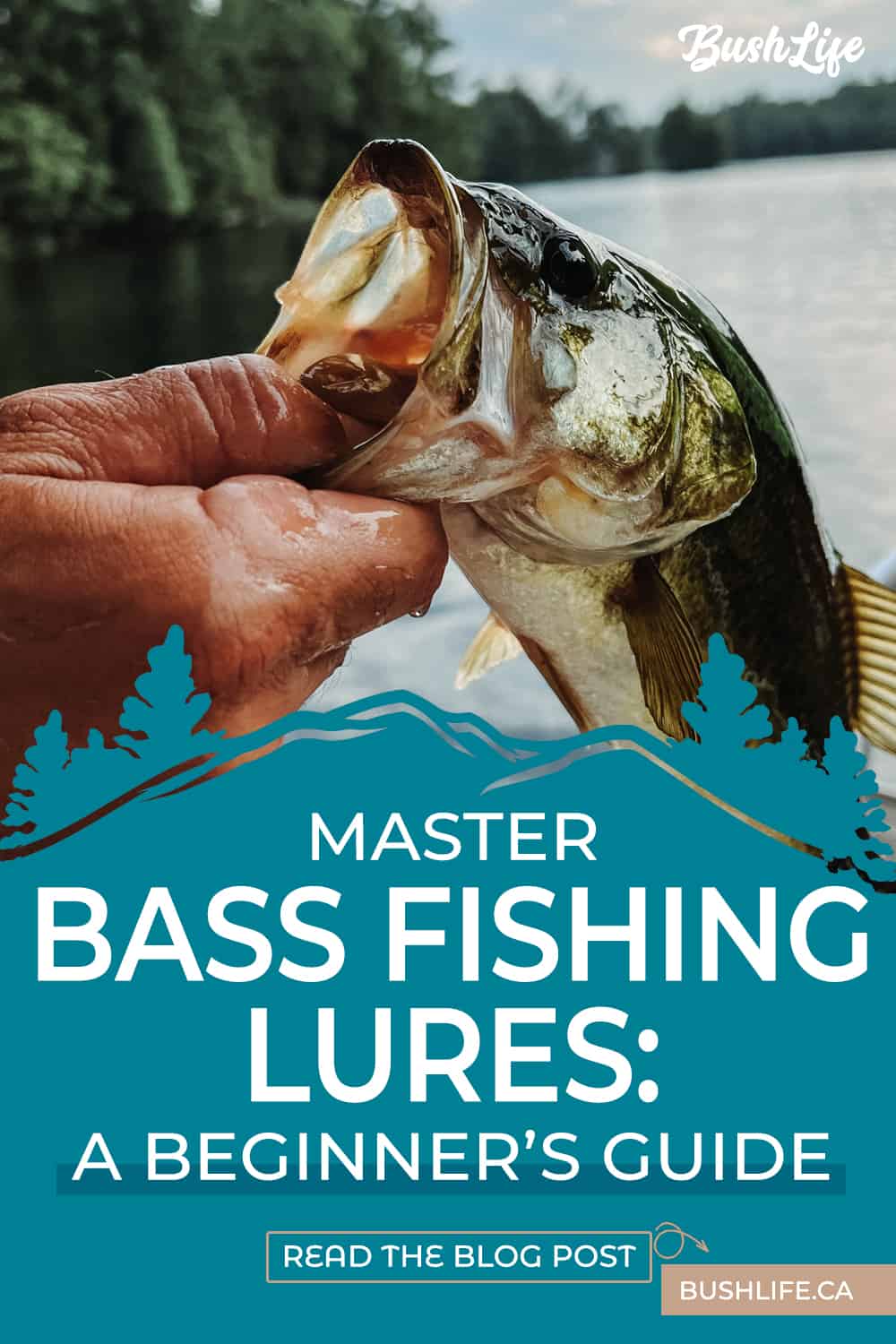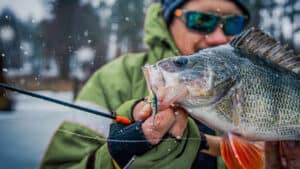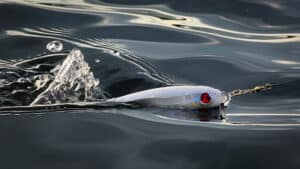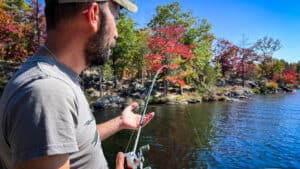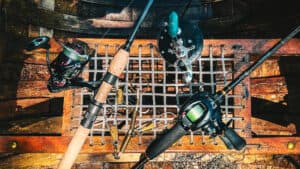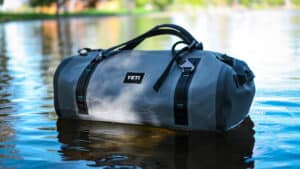Are you ready to take your bass fishing skills to the next level with the best bass fishing lures? Whether you’re a novice angler or looking to sharpen your techniques, choosing the right fishing lures can make all the difference in your success on the water.
With an overwhelming array of options, finding the perfect bass fishing lure can seem like casting into a vast sea of choices. But worry not because, in this guide, we’ll equip you with the knowledge you need to select the best bass fishing lures.
From understanding the different types of fishing lures to using the correct techniques, we’ll break it all down for you so you can determine the right factors to consider. So grab your fishing gear because we’re about to dive into the exciting world of bass fishing, where reeling in the big one is the ultimate thrill.
Discloure: Posts may contain affiliate links. Purchases made through our links result in a small commission to us at no charge to you. We only recommend products that meet our brand standards based on testing and first hand use by our authors.
- Understanding the Different Types of Bass Fishing Lures
- Factors to Consider When Choosing Bass Fishing Lures
- Top Bass Fishing Lures for Beginners
- Techniques for Using Bass Fishing Lures Effectively
- Bass Fishing Lure Maintenance and Care Tips
- Where to Buy Bass Fishing Lures
- Recommended Resources for Learning More About Bass Fishing Lures
- Common Mistakes to Avoid When Choosing Bass Fishing Lures
- Conclusion: Finding the Perfect Bass Fishing Lures for Beginners
Understanding the Different Types of Bass Fishing Lures
Each fishing lure on the market is carefully engineered to imitate a specific type of baitfish or prey. Your chances of success increase when you know which bass fishing lure to select and when to use it.
Ideally, you are trying to mimic the local baitfish in the area by selecting the best bass lure AND using the correct presentation. All this has to factor in water temperature, clarity, weather, baitfish movement, season, etc. So, let’s explore the various types of bass fishing lures and give you a comprehensive understanding of their characteristics.
Crankbaits
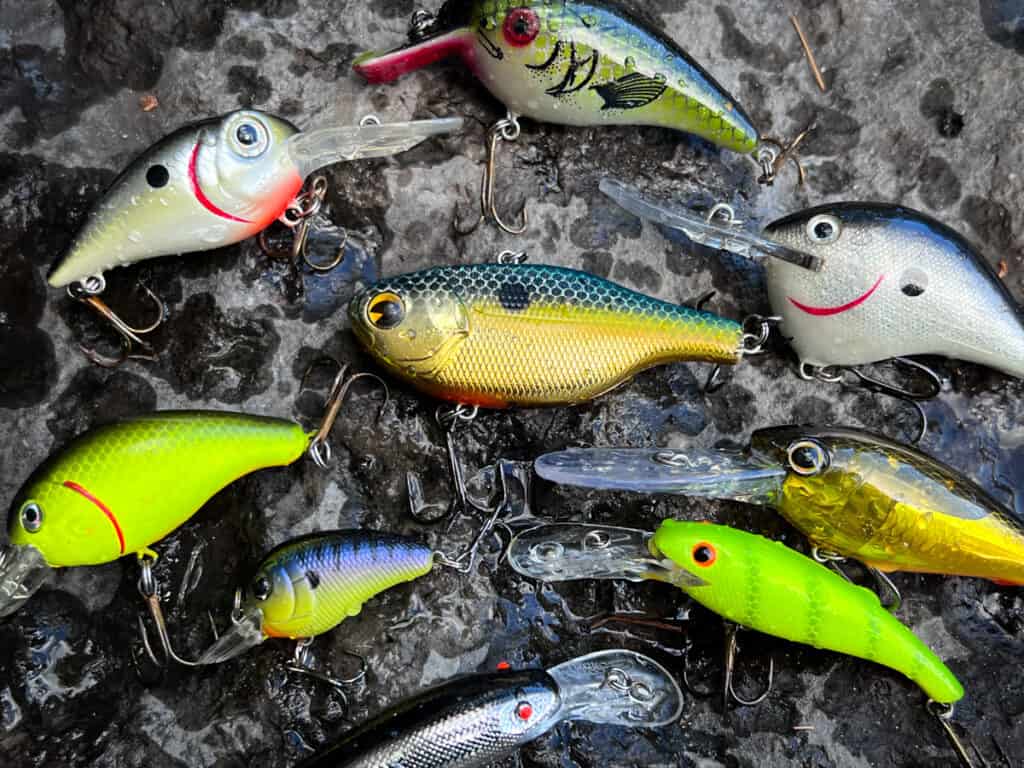
One of the most common types of bass fishing lures is the crankbait. These lures imitate injured or fleeing baitfish, creating erratic movements that entice bass to strike. These lures have a diving lip that allows them to dive to a specific depth when retrieved. Crankbaits come in various shapes and sizes, each designed to dive to different depths in the water. Understanding the diving depth of a crankbait is crucial, as it allows you to target specific areas of the water column where bass are likely to be feeding.
Our Favourite and Best Bass Crankbait: Megabass Deep-X 200
Spinnerbait
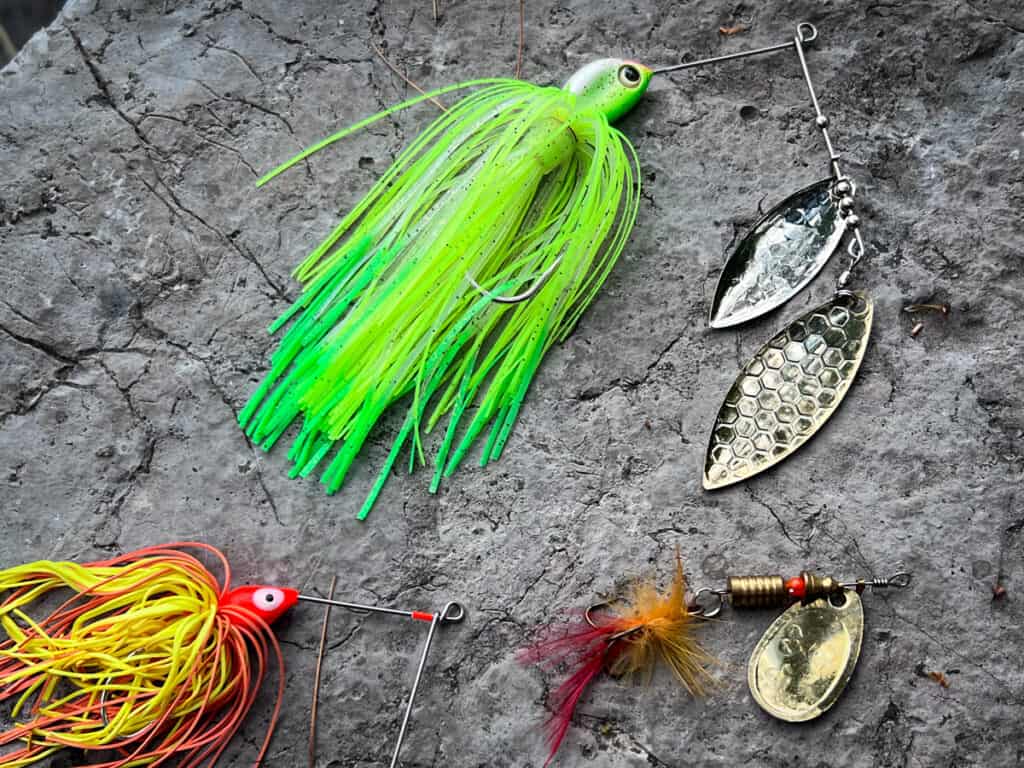
Another type of lure is the spinnerbait. It consists of 1 or more metal blades that spin with a skirted jig on the opposite end. As you retrieve the fishing lure through the water, the blade(s) create vibrations and flashes that mimic a small school of baitfish, catching the attention of nearby bass. Spinnerbaits are popular amongst anglers for their versatility and effectiveness in various water conditions.
When fishing weedbeds specifically, the spinnerbait is your best friend. Unlike triple hooks, the spinnerbait is better at breaking through weeds. More importantly, as the lure pops and bounces off the weeds, it often gets a good reaction strike.
Our Favourite Spinnerbait for Bass: MegaBass SV-3
Jigs

Jigs are another essential type of bass fishing lure. These lures consist of a weighted head and a trailer, which can be a soft plastic bait or a skirted jig. Jigs are incredibly versatile and can be fished using various methods, such as dragging them along the bottom or flipping them into heavy cover. Their realistic appearance and slow, methodical movements often trigger bass to strike. When you find your other bass fishing lures not producing results, this is the time when you want to use a jig.
Soft Plastic Bait

Soft plastic baits are another category of bass fishing lures that every beginner should be familiar with. These lures come in various shapes and sizes, including worms, creatures, and swimbaits, and can be rigged with different hooks and weights. The key to using soft plastic baits effectively is to imitate the movement and behaviour of natural prey.
Our Favorite Plastics: Yamamoto Senko 5″ Worms
Topwater Lures
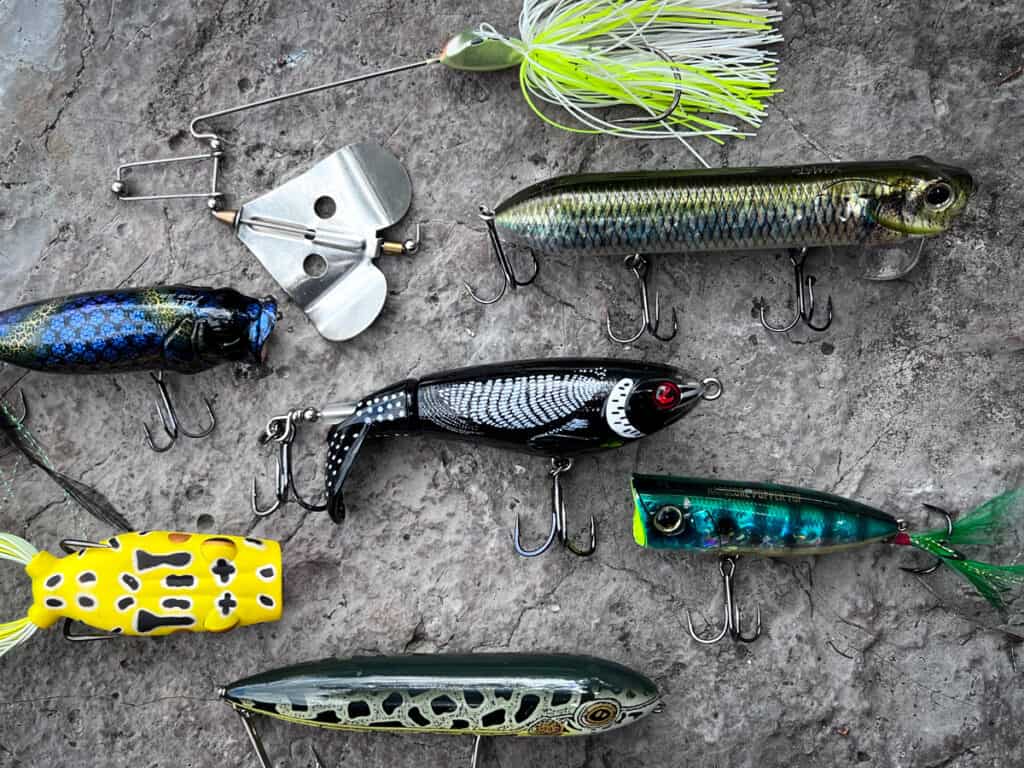
Topwater lures are the thrill-seekers of bass fishing lures. These lures aim to float on the water’s surface, creating enticing movements and disruptions that simulate the actions of distressed prey. Topwater lures are most effective in calm conditions, during low-light periods, or when the bass is particularly aggressive. When a bass attacks a topwater lure, it is an explosive strike that is exciting and visually rewarding.
Our Favourite and Best Bass Topwater Lures:
Poppers: Shimano World Pop, Megabass Popmax
Walking Bait: Teckle Kicknocker
Buzzbait: Megabass Jamaica Boa
Whopper Plopper: River2Sea 110 (4 3/8″)
RELATED: 11 of The Latest Spring Fishing Lures for 2024
Factors to Consider When Choosing Bass Fishing Lures

When it comes to selecting the best bass fishing lures, take into consideration these few key factors. First and foremost is understanding the prevailing conditions of the water; this is crucial as different fishing lures excel in different situations – which means assessing the water temperature, clarity, and weather conditions.
1. Water Temperature
Water temperature plays a significant role in determining how the bass will behave and their willingness to strike. In cold waters, bass are sluggish and less likely to chase down fast-moving lures. Therefore, you should opt for a slower, more subtle lure like a jig or a soft plastic worm. On the other hand, in warmer water, the bass is often more active and aggressive, making topwater lures or fast-moving crankbaits more effective.
2. Water Clarity
The clarity of the water is another factor to consider. In clear water, bass rely more on vision to locate prey, so using lures that closely resemble natural baitfish or critters can be highly effective. If you find yourself in murky or stained water, lures with a sizeable profile or fishing lures that create more vibration or noise can help the bass locate and strike your bait. Fish, in general, will often sense a lure’s vibration and begin the chase long before they actually see the fishing lure.
3. Weather Conditions
Weather conditions also play a role in fishing lure selection. On bright, sunny days, bass might seek shelter in deeper water or under cover, so lures that can be worked in those areas, such as jigs or Texas-rigged soft plastics, can be effective. On cloudy or overcast days, bass may be more likely to roam and feed in shallower water, making topwater lures or shallow-running crankbaits a good choice.
4. Depth
Consider the feeding behaviour of the fish, which can be a massive element in lure selection. Are the fish actively feeding on the surface or near the bottom? Other times, bass are found suspended in the water column, which can be the most difficult.
5. Presentation
Remember to vary your presentation if things aren’t working! The bass may be chasing down fast-moving prey or prefer slower-moving offerings. Sometimes, the lure is not the issue, rather than the speed of the retrieve. Be sure to change that up and see if it sparks more bites.
If you’re having one of those days when nothing seems to work, try changing lures based on vertical versus horizontal presentation. Ie. If you know the fish are there, and a jig isn’t working, try a spinnerbait and vice versa.
By carefully considering these factors and selecting the correct fishing lure for the conditions and bass behaviour, you can vastly improve your chances of landing a trophy-size bass. Be sure to have a varied selection of bass lures in your tackle box and be ready to experiment with different techniques. As conditions change, be prepared to adjust your approach based on what the bass is telling you.
RELATED: Fishing Basics: Our Introductory Guide for the New Fisherman
Top Bass Fishing Lures for Beginners
With fishing conditions and bass behaviour in mind, having the top bass fishing lures in your tackle box can further enhance your success as a beginner bass angler. Not only are these recommended for beginners, these lures are also the top choices for professional anglers.
1. Spinnerbaits
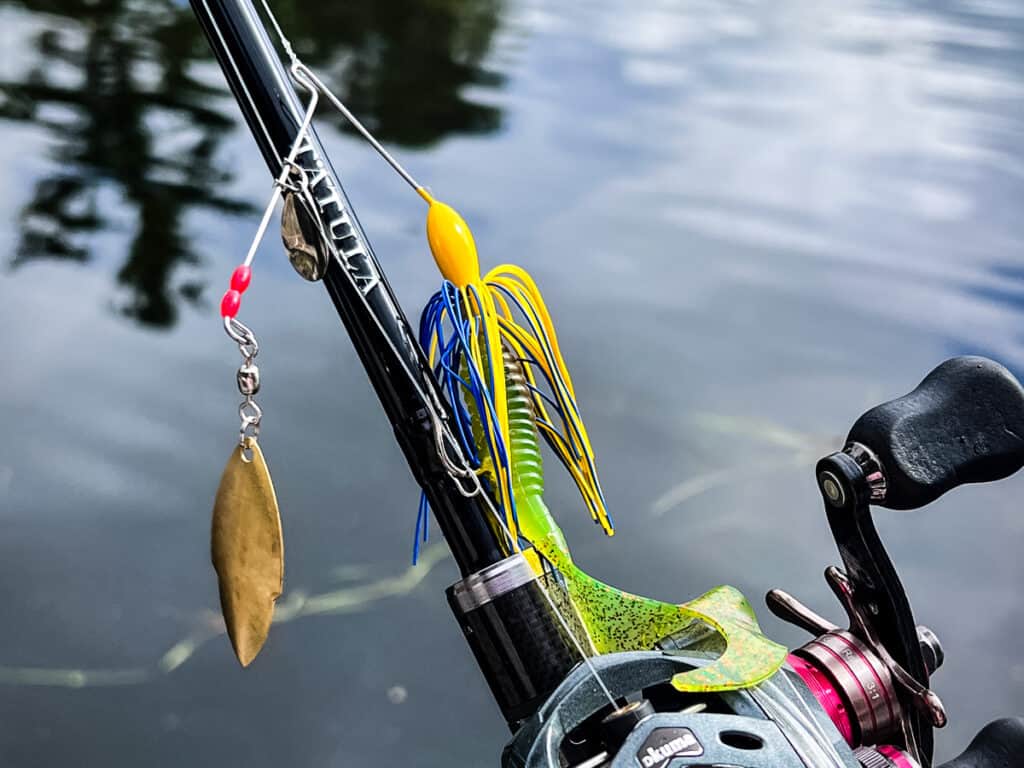
Spinbaits consist of a metal blade that spins as you retrieve the fishing lure through the water, creating vibrations and flashes that catch the attention of nearby bass. Spinnerbaits can be effective when the water is murky – or the bass is actively feeding on the surface. Spinnerbaits are my go-to when dealing with heavy weed cover.
2. Soft Plastic Worms
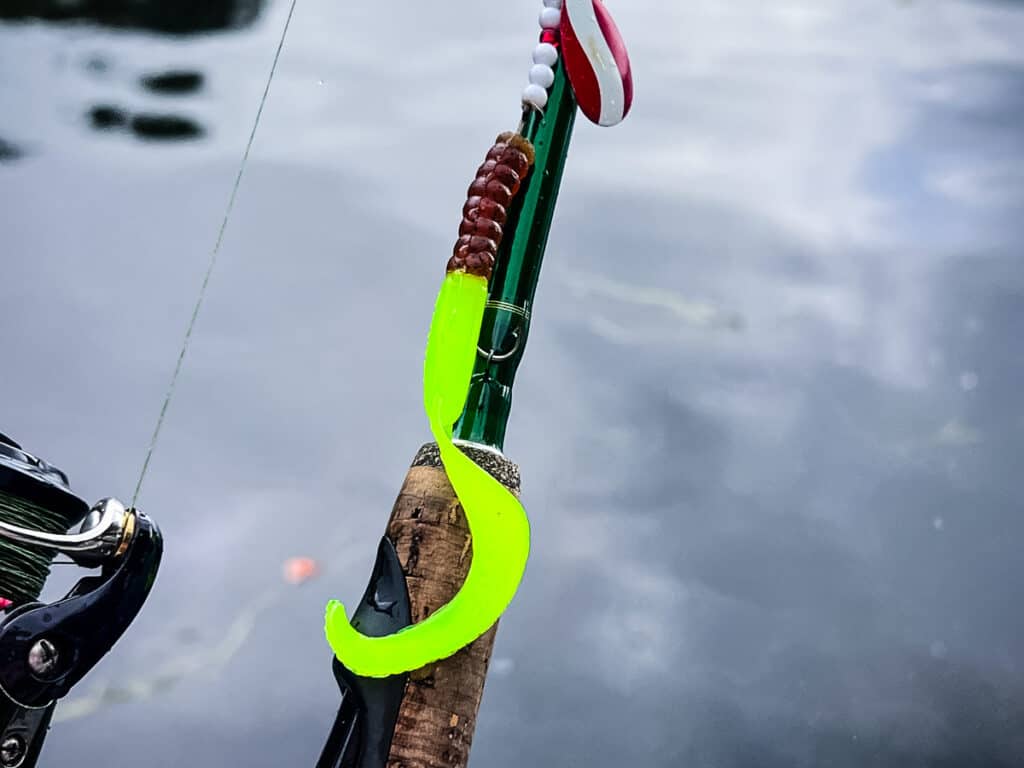
Soft plastic worms are especially effective when bass are in a more sluggish, less aggressive mood. Consider bright-coloured soft plastic worms in murky water and natural colours in clear water. Over the years, our goto plastic worms have been the natural colour and black with a pink tail.
Plastics are more of a “finesse” technique and can be rigged in various fashions such as wacky, Texas rig or drop shot. Texas rigs are the go-to for heavy weed cover, and drop shot is suited for those times you want to set your worms to be at a specific depth off the bottom. You can also set up drop shots in a weedless fashion.
3. Crankbaits
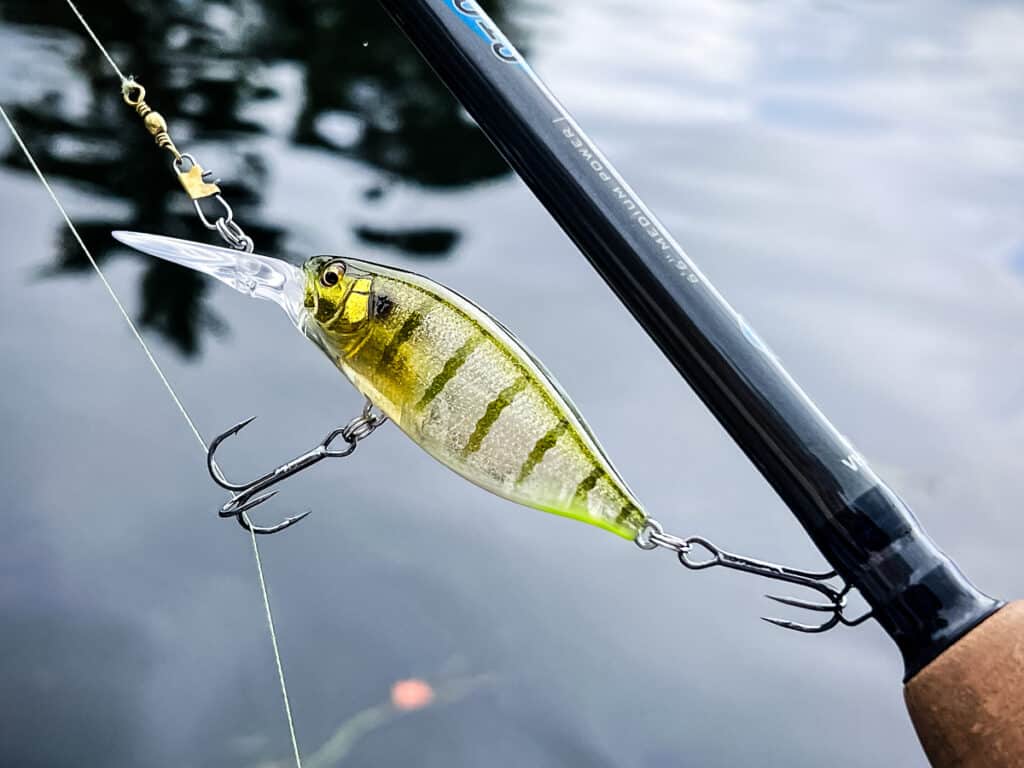
Crankbaits are also a favourite, as they are effective in areas with submerged structures or when bass are actively chasing fast-moving prey. We found that colours similar to the waterbody’s baitfish do better in colder waters, whereas bright crankbaits fare well in warmer waters. Our favourite crankbait is the Megabass Deep X.
4. Topwater Lures

Topwater lures are super exciting and can yield an impressive and memorable strike. These fishing lures excel in calm water conditions or when bass actively feeds near the surface. We found that topwater fishing lures that are green, yellow, white or blue yield favourable results.
Remember, the key to success is to have a varied selection of lures in your tackle box. Bass will not respond to the same old fishing lure used every time, especially in busy waters with anglers throwing various fishing lures at them.
Techniques for Using Bass Fishing Lures Effectively
The key to hooking a trophy bass is to vary your technique. Beginner anglers struggle with hooking up a fish as their technique usually involves a straight retrieve. Whether it be a slow or quick retrieve, no prey in the water moves in a straight line. Let’s look at some techniques that you can practice and perfect.
Fishing Techniques for Topwater Lures
When using topwater lures, it’s all about creating a realistic action that entices bass to strike. These lures float on the surface and imitate various types of prey, such as frogs, mice, or injured baitfish. To effectively work these lures, try using a series of twitches, pauses, and retrieves, which creates the illusion of struggling prey.
Crankbait Fishing Techniques
For crankbaits, the key is to mimic the movements of injured or fleeing baitfish. These lures have a diving lip that allows them to dive down to a certain depth when retrieved. To use your crankbait effectively, cast it out and reel the crankbait in at a steady pace. Vary the speed (which affects depth) of your retrieves to imitate the erratic movements of wounded baitfish. You can also try fast cranks of the reel with pauses in between or even burning the lure and sweeping the rod occasionally to get the fishing lure to bounce off a hard bottom and get that reaction strike.
Spinnerbait Techniques for Bass Fishing
A versatile lure that excels in various situations is the spinnerbait! The key to using spinnerbaits effectively is to vary your retrieve speed (and depth). Start by casting the spinnerbait out and reeling it in at a medium speed. If you’re not getting bites, try slowing down and slow-roll along the bottom. Finally, you can also speed up and burn the lure just under the surface – this doesn’t give the bass time to look (and think), which leads to a satisfying reaction strike.
Experiment with different depths by choosing different spinnerbaits based on weight or adding a trailer. And, of course, this goes back to retrieve speed – the slower, the deeper the lure goes.
Effective Jigging Techniques
Jigs are another versatile lure. To effectively use jigs, cast the jig out and let it sink to the bottom. Once the jig reaches the desired depth, use a series of short hops and pauses to imitate a crayfish or other bottom-dwelling prey. Pay close attention to any subtle taps or pressure on the line, which could indicate a bass has taken the bait. Jigs are especially effective when bass are holding near cover or in areas with dense vegetation. Also, aim for an instant hookset with jigs, as fish will spit the lure out quickly when they bite on all that metal.
Now, armed with the knowledge of the different types of bass lures and fishing techniques, you can confidently increase your chance of reeling in that desired bass.
RELATED: Proven Essential Tips to Master Fall Fishing
Bass Fishing Lure Maintenance and Care Tips
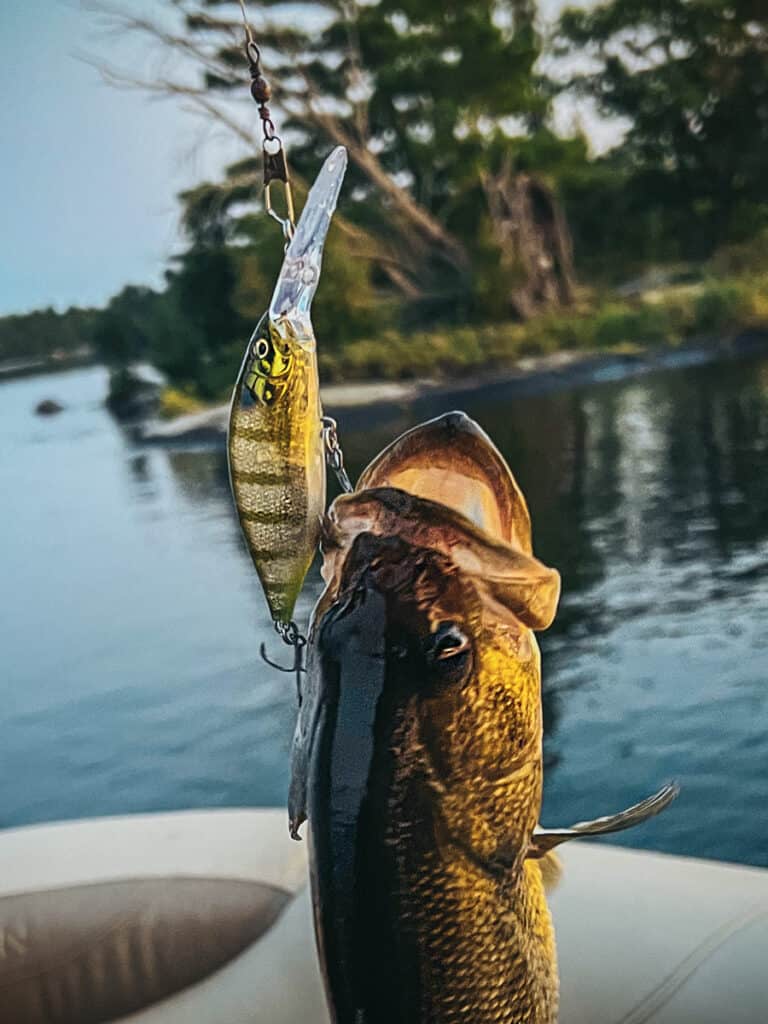
After a day of fishing, we all mindlessly make the mistake of tossing our wet fishing lures into a tackle box only to find the lure peeling or with rusty hooks. Bass fishing lure maintenance and care tips are equally essential to enhancing your fishing experience and ensuring the longevity of your fishing lures. You can continue to attract and entice bass by properly taking care of your fishing lures. Here are some simple maintenance tips to keep in mind:
Tip #1
Tip #2
Tip #3
Tip #4
Tip #5
When you adhere to these bass fishing lure maintenance and care tips, you’ll not only extend the life of your lures but also increase your chances of catching that bass.
RELATED: How to Choose the Right Fishing Reel: A Comprehensive Guide
Where to Buy Bass Fishing Lures

With the increasing popularity of bass fishing, finding a wide range of the best lures for fishing is easier than ever.
If you’re someone who enjoys the experience of browsing through physical stores, visit your local sporting goods store like Sail or BassPro. Otherwise, there are specialty fishing tackle stores like Peterborough Pro Tackle in Canada and Tackle Direct in the US. These establishments often have knowledgeable staff who can provide advice and recommendations based on their experience and your skill level and fishing preferences. Plus, shopping in person allows you to physically examine the lures, ensuring you pick the ones that suit your needs best.
Another option is the convenience of online shopping. The benefit of online shopping is access to customer reviews, an extensive selection of fishing lures and discounts. Making it easier to find affordable yet effective fishing lures for beginners.
Recommended Resources for Learning More About Bass Fishing Lures

There are plenty of resources available when it comes to expanding your knowledge of bass fishing lures. Whether you prefer reading books, watching instructional videos, or following online forums, these resources will provide valuable insights and tips to enhance your lure selection skills.
One classic resource that many anglers swear by are fishing books. These books often delve into the nuances of bass fishing and offer in-depth explanations of various lure types, techniques, and strategies. Look for titles written by experienced bass anglers and experts in the field. Some popular recommendations include “Bass Fishing 101” by Kevin VanDam and “In Pursuit of Giant Bass” by Bill Murphy. Then there is our favourite series, from Field & Stream, which would be the Total Fishing Manual. Their books are amazing!
If visual learning is more your style, instructional videos are a great way to enhance your understanding of bass fishing lures. There are countless YouTube channels and websites dedicated to providing step-by-step tutorials and demonstrations on lure selection and usage. YouTube Channels like BassFishingHQ are known for their informative videos that cover a wide range of topics related to bass fishing lures.
For those who enjoy the interactive nature of online communities, joining fishing forums can provide a wealth of knowledge. Online fishing forums such as BassResource.com and Bassfishin.com have active communities of anglers who are more than willing to share their experiences and insights. These platforms allow you to ask specific questions, seek advice, and engage in discussions about bass fishing lures. You might even come across recommendations for lesser-known lure brands or unique fishing techniques that could give you an edge on the water.
Common Mistakes to Avoid When Choosing Bass Fishing Lures
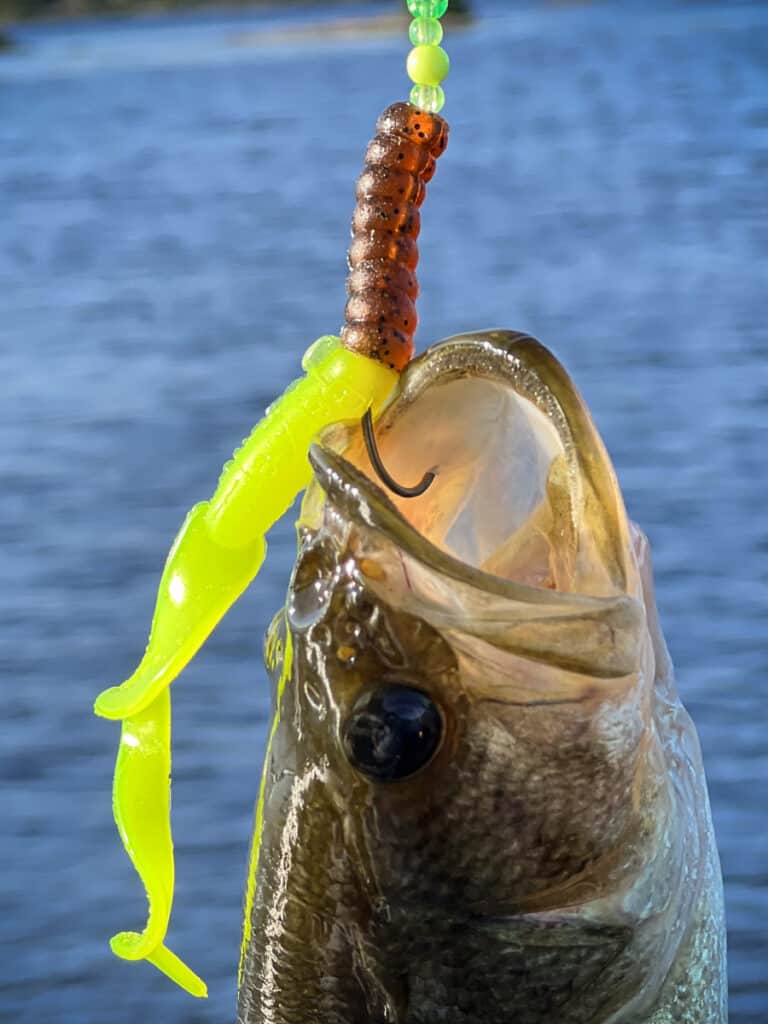
One of the most common mistakes to avoid is solely relying on trendy lures. While it’s tempting to pick fishing lures that everyone is talking about, it’s essential to remember that fishing conditions and bass behaviour will vary widely. What works for one angler may not work for another, and what was effective yesterday may not be today. Instead of following the crowd, take the time to understand the specific characteristics and features of different lures and how they relate to the waterbodies and conditions you’ll be fishing in.
Matching Lure Size to Target Bass
Overcomplicating Purchases
Lack of Adaptability
By avoiding these common mistakes and approaching lure selection with a thoughtful and adaptable mindset, you’ll increase your chances of finding the perfect bass fishing lure for your beginner’s journey.
Conclusion: Finding the Perfect Bass Fishing Lures for Beginners
In conclusion, choosing the best bass fishing lures for beginners is crucial in levelling up your fishing game. Throughout this bass fishing lure guide, we’ve explored the different types of lures, factors to consider, top choices for beginners, effective fishing techniques, maintenance tips, and even where to purchase these essential tools. Now armed with this knowledge, it’s time to put what you know into action!
So, grab your gear, hit the water, and embrace the thrill of reeling in your next big bass. Just think, with every cast, you’re one step closer to becoming a skilled angler. Good luck!
Comment your favourite bass fishing lures or colour preference. Or share with someone who you think could use these helpful tips. Thank you!
Bookmark this post on Pinterest for future reference!
